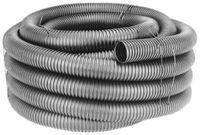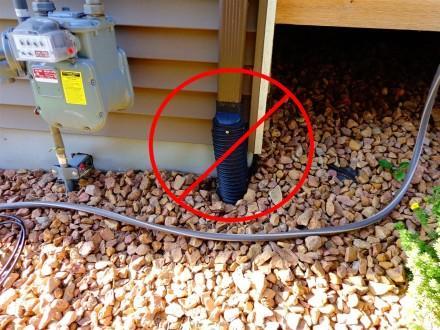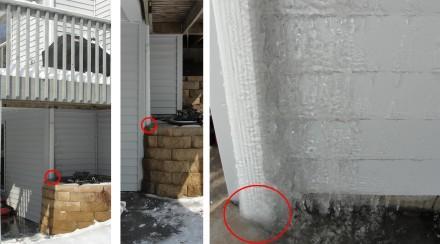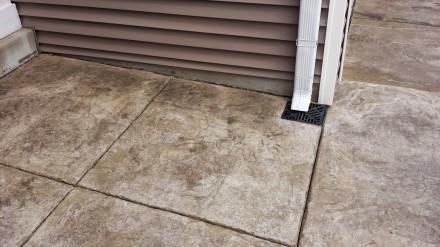One of the main jobs of gutters is to direct water away from the building, which helps to prevent wet basements and foundation problems. When downspouts drain right next to the building, water gets concentrated to one location, which is usually worse than no gutters at all. I've said it before and I'll say it again: downspout extensions are important.
The photo below shows a nice example of a house with long downspout extensions carrying water a good distance away from the house.


This is the same stuff that I mentioned in a recent blog post while discussing sump pumps discharging to a yard drain. Just like the discharge tubing from a sump pump, connecting a downspout directly into an underground drain can allow for ice to back up. Don't do this.

While a blocked sump pump discharge can lead to a wet basement, so can blocked downspouts. The home pictured below had a downspout discharging directly into the ground that filled with ice, and ended up leaking a lot of water in to the basement during the course of my inspection.

The infrared image of the same corner in the basement shows how wet the wall was during the inspection, all as a result of ice backing up and finding it's way into the house.

This water intrusion could have been avoided by having the downspout discharging into a drain receptor instead. While this may appear to be a direct connection, the downspout shown below ends approximately 1" above the top of the drain receptor.

It obviously takes some planning to get a system set up like this, but this is a great way of managing water from downspouts, and it's especially easy to do with new construction before the walkways are poured.

